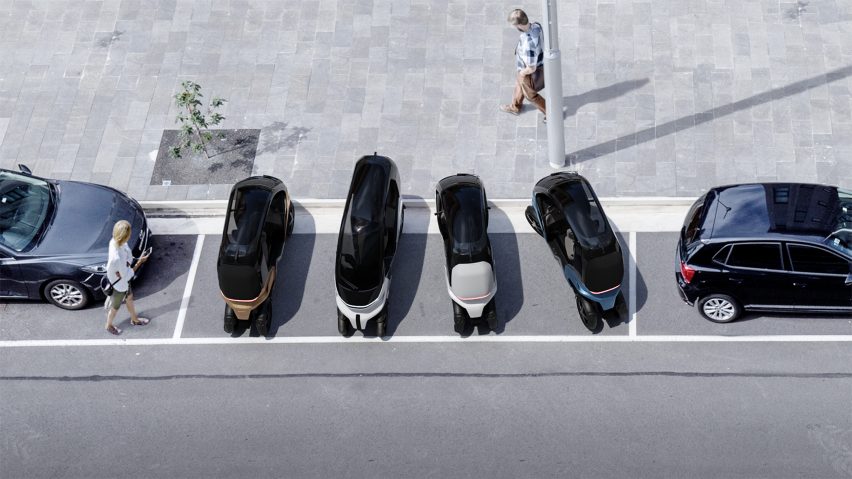
"Making cars electric is not enough" says Lowie Vermeersch
Former Ferrari-designer Lowie Vermeersch has created a new type of micro vehicle intended to push traditional cars off the road. In this interview, he discusses new start-up Komma and his vision for the future of mobility.
"I always say, moving an 80-kilo person with 2.5 tonnes of material is not something we should consider as the best we can do, especially in an urban environment," said Vermeersch.
The Granstudio founder has previously overseen the design of the Ferrari FF and 458 Italia while design director at Pininfarina and led work on the Maserati Birdcage 75th concept car.
His latest project – Komma, invented together with Punkt founder and CEO Petter Neby – has a much smaller footprint. A covered, electric two-seater vehicle with car-like seats but a narrow width like a motorcycle, it is designed to take up less space on the roads and use less material to manufacture.
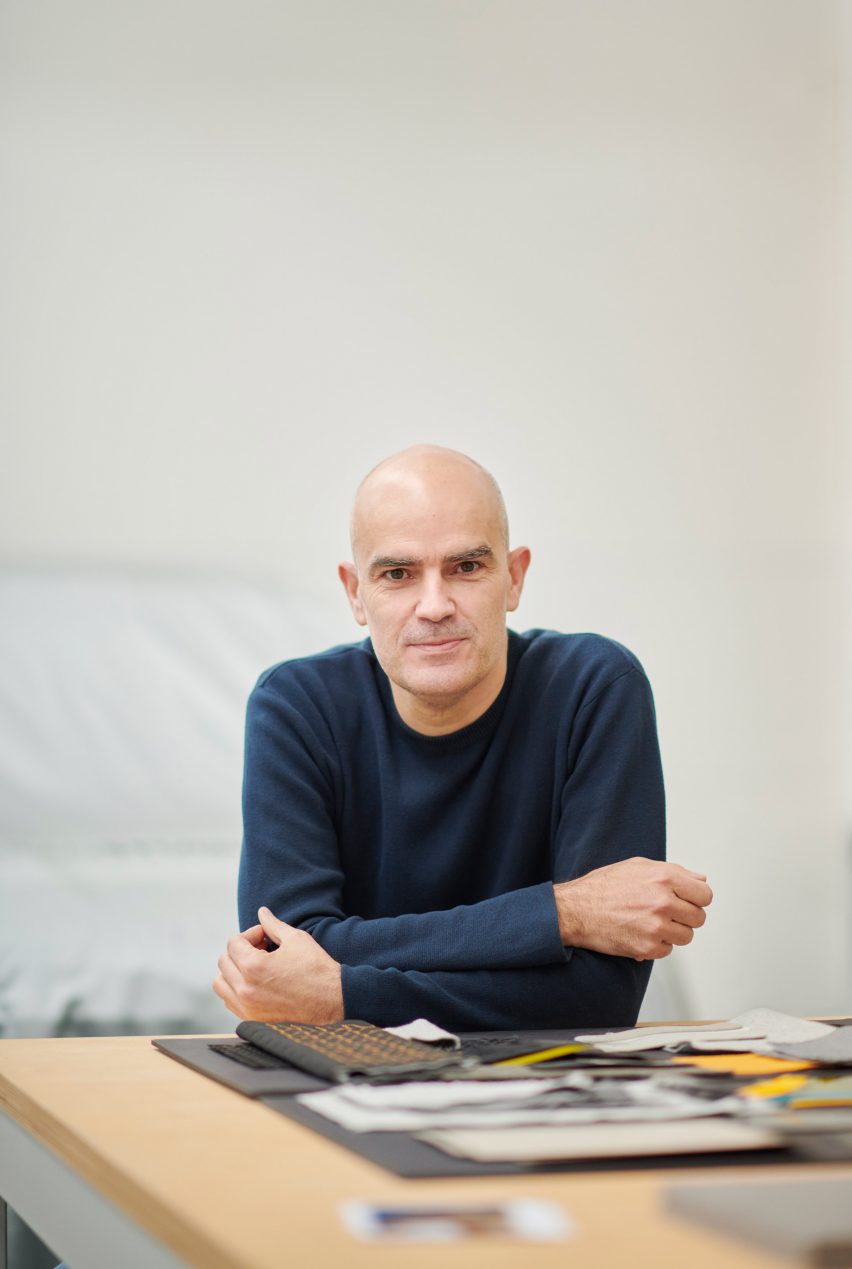
"Just making cars electric is not fully answering what is needed," Vermeersch told Dezeen. "We also need to be looking at how we can use less resources."
Neby and Vermeersch intend to do more with Komma than only manufacture vehicles, however; they plan to use the company to advocate for a shift in mobility away from the car and towards other, diverse modes of transport.
They hope that Komma can influence urban design in the 21st century in a similar way to how cars shaped cities in the 20th century, this time not with highways and suburbs but features that promote sustainability and wellbeing.
Startup seeks to "ignite a change in urban mobility"
Komma began life in late 2019, after Neby approached Vermeersch with "a need that he had lived himself, for a type of vehicle that he felt was missing", Vermeersch said.
The design and development were handled by Vermeersch's team at Granstudio, the transport-focused design studio he founded in 2010, while entrepreneur Neby brought experience in minimalist electronics from his company Punkt, whose devices include a dumbphone designed by Jasper Morrison.
The Komma car – which comes in two models, one fully closed and one open at the sides – is designed to carry one or two people as well as a small amount of cargo, such as shopping, on trips around the city or suburbs.
The company claims the vehicle covers 90 per cent of car-use needs while requiring only 30 per cent of the material resources and energy, and that it can bring pleasure back to the daily drive.
The narrow maximum width of 90 centimetres is, says Vermeersch, particularly key to the transformative potential of the vehicle.
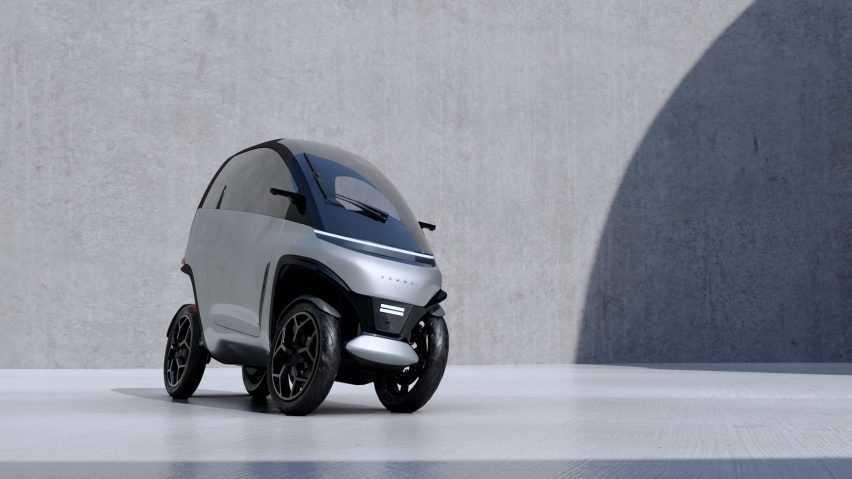
"We always looked at: what will be the consequence if you have mass adoption of this kind of vehicle, and is that consequence positive?" said the designer.
"That's why we worked so hard on making a vehicle that is only half of a car width – which is narrower than a motorcycle – because only then can you ignite a change in urban mobility."
"At a certain point, a city could decide to just paint one extra line in the middle of the street that could become dedicated to such kinds of vehicles," he argued. "Whereas most of the microcar offerings, which are wider, do not have that potential because they need to behave like cars and need to move together with cars."
Push for change in mobility about being "true to what in essence cars stood for"
Vermeersch and Neby plan to be active in shaping the future of mobility through Komma. They see vehicle design and urban design as feeding into each other, and believe that if a new, nimble vehicle archetype emerges, it could enable cities to gradually reduce the road space and parking given to cars and allocate more room to pedestrians and community activities.
Vermeersch says the company will try to partner with local governments and infrastructure and mobility companies to develop pilot projects in this space, claiming the Komma is a good fit for car share schemes, taxi services and private ownership alike.
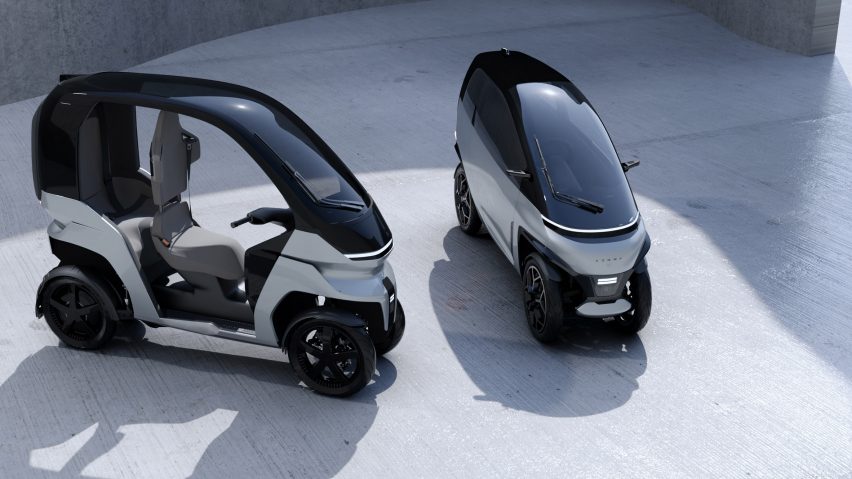
While it may seem like blasphemy for a car-lover to actively pursue a reduction in their manufacture and use, Vermeersch contends that his position is about honouring the idea behind the invention rather than being "stuck to the object" itself.
"If you want to be true to what in essence cars stood for, they stood for a sort of individual freedom of mobility," he said. "And I think everybody would agree that a car being stuck in a traffic jam is not living up to that."
Future vision for transport needs to have "human pleasure at its heart"
Vermeersch insists he is not anti-cars. He believes they will, and should, continue to play a role in the transport ecosystem, albeit a reduced one.
"For me, the future of cars is as part of a more diverse mobility spectrum, whereas until now, the car has been rather dominating the spectrum," he said. "The problems that we have with cars are not so much in the car itself but how we use it and where we use it."
"I think the car will still be in the future the best and most ecological solution for many, many uses," he continued. "And with 'car', I mean a kind of improved future car, so electric is definitely one step of it. I'd also like to see cars developing more lightness."
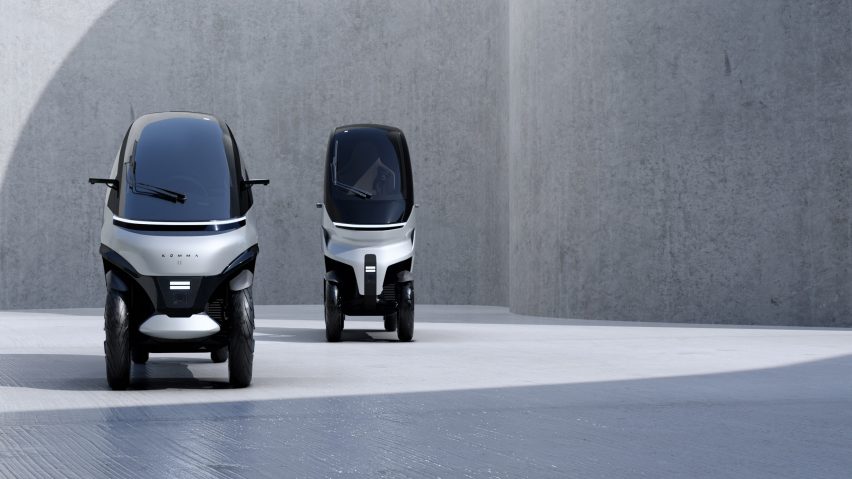
Vermeersch is also keen to shift the discourse away from being either "for or against" cars, which he sees as feeding into a culture war where freedom is pitched in opposition to over-consumption.
"The search for a better way of living is not helped if we take these absolute positions," said Vermeersch. "It's as if the car is the origin for all the bad things that's going on. That's not true."
Rather, he thinks we should see the move away from cars in cities as a "positive story" of the evolution of mobility.
"For me, in that picture of a more diverse mobility spectrum there's also place for having the cars that you really have fun with," he said. "And maybe it's not the car you own; maybe it's the car that you use on the weekend or share."
"Any scenario that we think about the future, if it will not have human pleasure at its heart, it's destined to fail. I think that's the part that keeps me connected to what people are passionate about with cars."
Designers must "look beyond the archetype of cars"
Komma hopes to release its vehicle by the end of 2025 targeting Europe as well as the USA and Canada as its first markets.
It will have a top speed of 130 kilometres per hour, equivalent to some of Europe's highest road-speed limits, and include car-like active safety features such as anti-lock brakes, airbags and anti-collision controls.
For the battery, there will be the option of either a single 7.5 kilowatt-hour or twin 15 kilowatt-hour module – both much smaller than in a standard-sized electric car but giving an expected range of up to 200 kilometres, similar to an electric Mini Cooper.
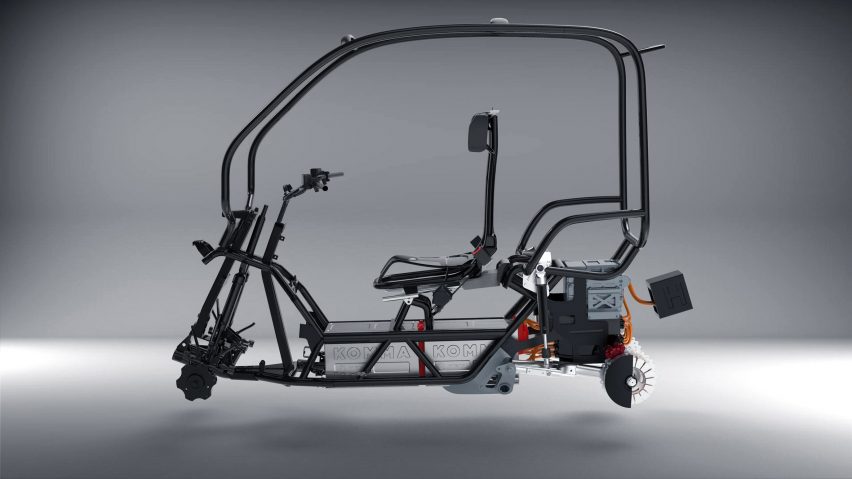
Vermeersch says that Granstudio designed the vehicle from the ground up to take advantage of the "geometric freedom" offered by electric drivetrains, which allow the engine to be virtually hidden inside the wheel rather than shaping the layout of the vehicle.
To add the desired element of pleasurability to the driving experience, there is torque vectoring on the wheels for improved grip, and the semi-open version of Komma has been given motorcycle-like handling, with a handlebar for steering and a tilt mechanism on the wheels.
"Knowing so well how cars are made also allows you to see new opportunities when new technologies come," said Vermeersch. "I think what is needed is more people looking into solutions who are, on one hand, broad-minded enough to look beyond the archetype of cars, but on the other hand, have enough knowledge of them to also understand how you can do that."
"There's fantastic things happening within the car business, and there's fantastic ideas about mobility at the broader scale, the urban scale, but they have a hard time overlapping," he continued. "Komma and also Granstudio for me is really about that."
The photography and images are courtesy of Komma.
Dezeen in Depth
If you enjoy reading Dezeen's interviews, opinions and features, subscribe to Dezeen In Depth. Sent on the last Friday of each month, this newsletter provides a single place to read about the design and architecture stories behind the headlines.